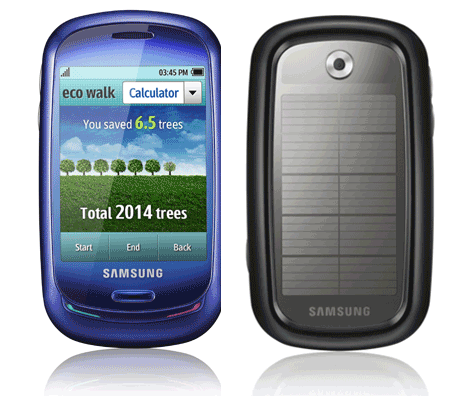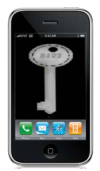 Here at the Nokia press conference at Mobile World Congress, the Finnish phone behemoth just announced two new E-series phones and–inevitably–an application store for distributing software not only to new Nokia smartphones but to millions of the company’s handsets that are already out there.
Here at the Nokia press conference at Mobile World Congress, the Finnish phone behemoth just announced two new E-series phones and–inevitably–an application store for distributing software not only to new Nokia smartphones but to millions of the company’s handsets that are already out there.
The first new phone the company introduced is the E55, which Nokia says is the world’s thinnest smartphone, and can run for up to a month in standby mode on a single charge of its battery; it sports a BlackBerry Pearl-style keyboard that puts two characters on each key and uses predictive input to figure out what you’re trying to type. The unsubsidized price is 264 Euros ($337), and it’ll be available this summer.
The other new phone is the E75, a new model that’s supposedly a sort of descendant of phones in Nokia’s Communicator range (read: slide-out keyboard and business-y features); the company says it’s less of a brick (and yes, they used that word) than earlier versions. It’ll cost 375 Euros ($479) unsubsidized, and is due next month.
The store is the Ovi Store–Ovi being Nokia’s name for its portfolio of consumery services–and while the images we saw look very much like Apple’s App Store, Nokia says that its storefront will use information such as your location and your friends’ favorite downloads to get to know you and recommend stuff you might like–including media as well as software. (Example given by the company: If your phone noticed you were in Barcelona, it might recommend a travel guide to Spain.) Facebook, MySpace, Fox Interactive, Electronic Arts, Lonely Planet, Rough Guides, Shazam, and Handmark are among the content and app developers already on board.
For all the bragging Nokia did this morning about the eerie precision with which the Ovi Store will get to know you and anticipate your needs and desires, I’ll believe it when I see it: Countless software and service companies have promised me their technologies would be able to read me like a book over the years, and I can’t think of one example of an experience feeling anywhere near that magical.
Nokia’s upcoming N97 will be the first phone to include Ovi when it shows up in June, but the store will be available as a downloadable upgrade for some phones beginning in May. It’ll let developers offer for-pay and free aps, and there will be options for credit card and carrier billing payment options which will vary by region.
After the jump, Nokia beauty shots of the E55 and E75, and my own fuzzy images of the Ovi Store from the press event.
Continue Reading →
 After LG did its phone watch demo, it focused most of its Mobile World Congress press conference on its new Arena phone–especially its interface, which LG calls S-Class. It looks reasonably slick, and features innovative 3D navigation, with a rotating cube you can touch to…oh, let’s not pretend. The most striking thing about S-Class is the degree to which it mimics the iPhone, down to the rows of icons (some almost identical to iPhone icons) on a black backdrop. There are some places where LG may have introduced certain improvements to Apple’s idea–S-Class goes into landscape mode when you rotate the phone, and you can swipe one row of icons at a time to bring more into view–but it deals very heavily in the sincerest form of flattery.
After LG did its phone watch demo, it focused most of its Mobile World Congress press conference on its new Arena phone–especially its interface, which LG calls S-Class. It looks reasonably slick, and features innovative 3D navigation, with a rotating cube you can touch to…oh, let’s not pretend. The most striking thing about S-Class is the degree to which it mimics the iPhone, down to the rows of icons (some almost identical to iPhone icons) on a black backdrop. There are some places where LG may have introduced certain improvements to Apple’s idea–S-Class goes into landscape mode when you rotate the phone, and you can swipe one row of icons at a time to bring more into view–but it deals very heavily in the sincerest form of flattery.


 Here at the Nokia press conference at Mobile World Congress, the Finnish phone behemoth just announced two new E-series phones and–inevitably–an application store for distributing software not only to new Nokia smartphones but to millions of the company’s handsets that are already out there.
Here at the Nokia press conference at Mobile World Congress, the Finnish phone behemoth just announced two new E-series phones and–inevitably–an application store for distributing software not only to new Nokia smartphones but to millions of the company’s handsets that are already out there.
 My colleague David Worthington reported on Thursday of
My colleague David Worthington reported on Thursday of  The Electronic Frontier Foundation’s Fred von Lohmann has published a post saying that Apple has filed comments with the Copyright Office contending that
The Electronic Frontier Foundation’s Fred von Lohmann has published a post saying that Apple has filed comments with the Copyright Office contending that  Google Docs has
Google Docs has 